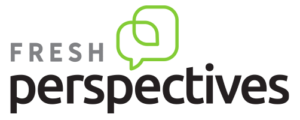March 8, 2022 / Marjoram
Large industrial brands have considerable marketing and creative needs. These needs can’t be met solely by internal marketing teams. In fact, they shouldn’t be.
An outside perspective is invaluable in marketing.
Managing your portfolio of marketing needs requires a balancing act between developing and optimizing your internal marketing resources and supplementing your needs with trusted, knowledgeable, outside partners.
Many needs mean many roles. And not everyone is suited to play every role.

To accomplish all your organizational marketing goals, you need a deep bench of marketing expertise and creative professionals. But how do you know who should be in what role? How do you figure out what should be done internally, and what work would be better suited for an outsourced creative agency?
Organizations struggle with these questions. And there is no one answer for arriving at that perfect mix of internal and external marketing know-how and execution. Because no two companies are ever alike.
There may not be one easily prescribed method to help you build out and optimize your company’s creative resources—but there is a model to help guide your approach. When you think about it, constructing your marketing team is surprisingly similar to building a competitive roster for your favorite pro basketball team.
Introducing, Your Marketing Roster
Sports analogies are fun. But what do product internal marketing teams and outside agencies have in common with basketball players? Quite a lot, actually.
But first, let’s start at the top. As a marketing leader in your company, you have many of the same responsibilities as a general manager of a pro hoops team. Your goal is to build a winning team to put on the court — or enable your department to successfully navigate your company’s marketing challenges.
Your marketing directors are a key part of the management team. As the team coach, they define the team philosophy, create the execution schemes and call the plays used during games. Put another way, they set the direction of your company’s marketing and communications efforts and initiate those campaigns.
Now, with the “front office” defined, let’s discuss those star athletes.
Developing Your Creative Draftees
Successful NBA teams must be able to draft and develop young talent into major contributors — players capable of staying on the court for the majority of the game. Similarly, successful companies must hire and train marketing and creative talent to carry out the bulk of the execution.
Your marketing team, just like an NBA team, also has roles and positions. Arguably, the most important position on the basketball team is the point guard. This player ensures that the called plays are run correctly and successfully, and they embody the style and character of the team. In many cases, the point guard is the star player.
What is the marketing equivalent of the star player? The brand, of course.
The brand is a key internal marketing resource, and in many ways, the brand marketing team calls the shots for the other marketing teams. Brand teams make sure marketing campaigns look how they’re supposed to look and sound how they’re supposed to sound.
The point guard’s main job is to ensure that plays are run correctly, but all five players on the floor are responsible for execution: screening, spacing, shooting, and rebounding. The same goes in internal marketing departments. Product and service teams, design and production units—they all collaborate with the brand team to create and deliver effective marketing messaging and campaigns.
Finding Free-Agent Reinforcements
Not all draft picks work out, however. Neither the five starting players on your team, nor the entirety of your internal marketing department, can handle all of the (playing time) responsibilities on their own.
There’s a large amount of action during games and throughout the season. Without reinforcements, it’s impossible to get it all done and win—so it’s helpful to supplement your roster with dependable, veteran players. These players have experience in the league and know the game well.
A skilled General Manager will complement the skills of his or her younger, less-experienced players with expertise the team does not possess. This helps to round out the roster, filling in the missing roles the starting unit can’t fulfill and the needed abilities they don’t yet possess.
In the marketing world, outside agencies with specialized marketing expertise are your free agent acquisitions. They step in to provide the marketing lift your company needs in areas where your team lacks the experience. Here, as in the NBA, you find good free agent matches by prioritizing credibility, capability and compatibility.
Managing Your Creative Bench, Balancing Your Roster
A championship-caliber team has a strong starting unit, a deep bench, the skills to overcome any challenge, and the experience to manage any situation on the court. But rarely are all the drafted players in the starting unit nor all the free agents on the bench. That said, we’ve seen the “all-drafted starting lineup” approach in large corporate environments before. Corporate marketing teams tend to cycle from one extreme to another, depending on leadership preference and style.
Marketing executives sometimes try to bring all marketing capabilities in-house. Or sometimes (typically after a leadership change) the approach swings the other way and most of the marketing functions are outsourced (the “all-free-agent” roster). Interestingly, cost reductions are often used as rationale for either scenario.
Change, of course, shouldn’t be feared. But change for the sake of change doesn’t make sense, either. Nor should cost-cutting be prioritized over effective team building.
You don’t often see teams win championships spending just to the salary floor. Bargain shopping your creative projects leads to similar results — not winning. Instead of adding value, you end up with an ineffectual assembly line approach that fails to reach your target audiences.
Choosing Your Marketing Starting Unit
You want to build your marketing capabilities for the long haul. Drafting your marketing “starting unit” should be about ensuring that your essential marketing functions and roles are well accounted for. You want to create stable, predictable, outstanding performance so you’re ready to meet any marketing challenge.
How do you do that?
To start, you define and outline all your creative marketing needs. Then, you scout yourself to understand what your internal team does well and match those capabilities to the needs you outlined. Finally, you supplement those abilities with outsourced marketing agencies for needs that are outside of your internal team’s expertise.
In other words, you fill your starting lineup with a mixture of players you developed (internal teams) and free agents (external agencies).
Starting Lineup Has to Deliver Best Value
Even if you do possess the same capabilities internally, hiring an outside agency makes sense. Why?
Even if the desired skill set exists internally, it may be dispersed among several teams or units. Meaning you may have to activate multiple internal resources to replicate the capability of a specialized marketing agency. The better value (cost and quality) is leveraging their package of specialized expertise.
In the marketing world, true creative value is found in fitting the right project to the right resource. Don’t ask your internal corporate communications team to produce creative videos, for example, just because they have an iPhone. This kind of resource misalignment is ultimately a waste of everyone’s time and money. A marketing agency is in a much better position to deliver impactful, high-quality content. You’ll achieve far more valuable results by giving outside specialists the starting nod and allowing your internal resources to focus on their own skill sets—and there is great value to the support your communications team provides from the bench.
Creating the Right Mix and Rotations of Roles
Providing clarity is a huge contribution that outside agencies provide, and they do that in ways both big and small.
Think about it. Free agents don’t just add their on-the-court skills to the table. Value is also derived from the mentoring they offer their less-experienced teammates. And this value is there regardless of whether the free agent is starting or coming off the bench.
Outside marketing agencies have the same impact on large corporate environments. Because they’re an objective source, they validate or challenge assumptions and approaches as necessary to create better, more effective messaging. (Internal teams are more than capable of supporting key marketing initiatives in the starting lineup, too. It all depends on whose strengths best match the need.)
Your needs won’t stay the same forever. Your marketing lineup must stay flexible and allow the team to take advantage of the best matchups. What does that look like for a large industrial brand? In many cases, that means putting outside agencies in position to validate go-to-market strategies and develop tactics, then letting internal resources focus on executing the campaigns.
A Deep Creative Bench Helps You Stay Ready to Win
Regardless of who’s in the marketing starting lineup today or tomorrow, to stay ahead of your competition you need a deep bench of creative resources. Hiring challenges, budget constraints, uneven demand for creative services — many factors threaten your ability to pull together the resources you need. The best way to stay ready to scale according to need is with a deep stable of credible agency relationships and sustained investment into internal marketing expertise.
Fresh Perspectives
A newsletter we send every other Friday to share our ramblings, perspectives, thoughts, and rants on all things B2B branding, messaging and marketing.
"*" indicates required fields


